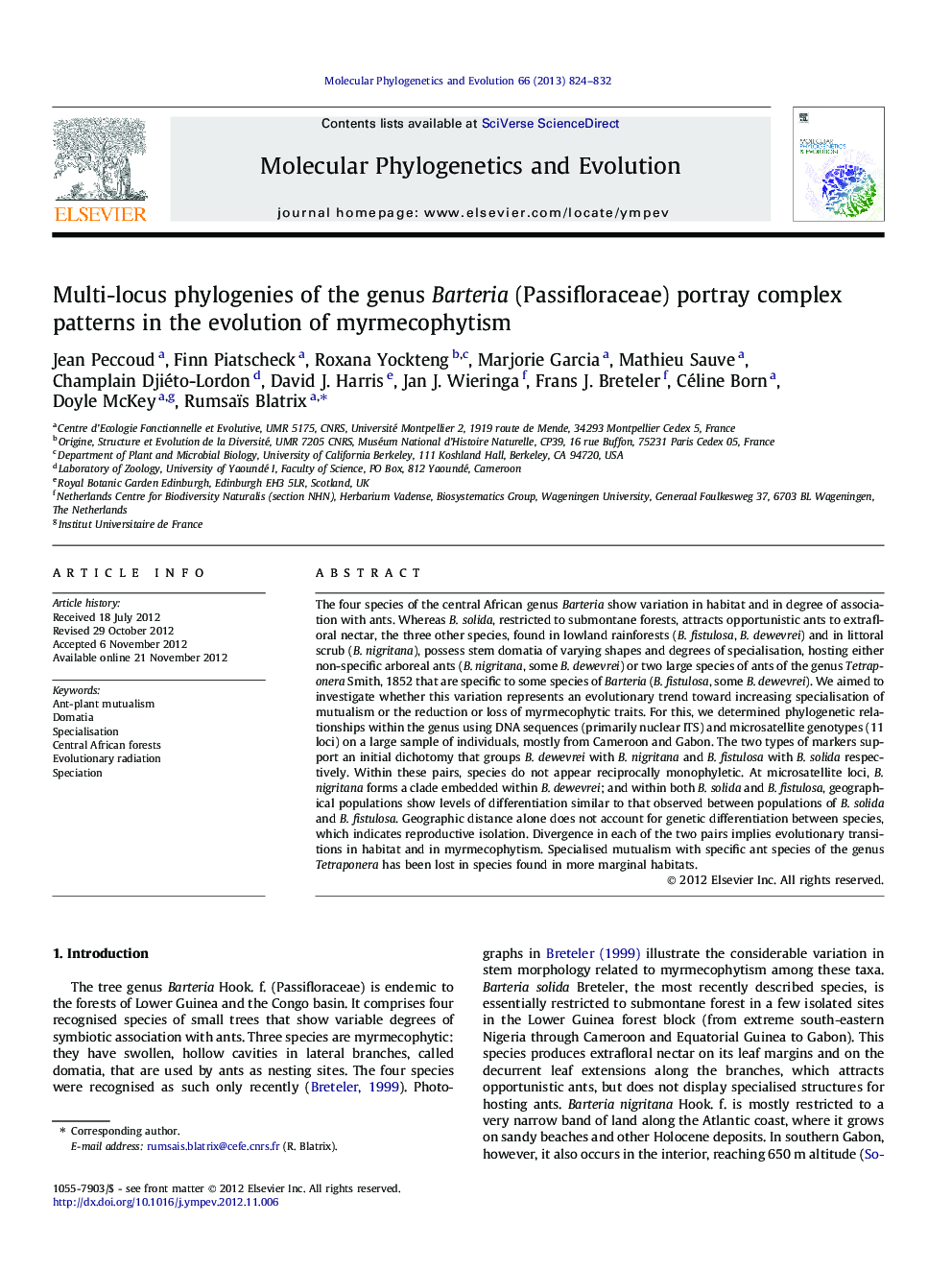| کد مقاله | کد نشریه | سال انتشار | مقاله انگلیسی | نسخه تمام متن |
|---|---|---|---|---|
| 2833952 | 1164275 | 2013 | 9 صفحه PDF | دانلود رایگان |

The four species of the central African genus Barteria show variation in habitat and in degree of association with ants. Whereas B. solida, restricted to submontane forests, attracts opportunistic ants to extrafloral nectar, the three other species, found in lowland rainforests (B. fistulosa, B. dewevrei) and in littoral scrub (B. nigritana), possess stem domatia of varying shapes and degrees of specialisation, hosting either non-specific arboreal ants (B. nigritana, some B. dewevrei) or two large species of ants of the genus Tetraponera Smith, 1852 that are specific to some species of Barteria (B. fistulosa, some B. dewevrei). We aimed to investigate whether this variation represents an evolutionary trend toward increasing specialisation of mutualism or the reduction or loss of myrmecophytic traits. For this, we determined phylogenetic relationships within the genus using DNA sequences (primarily nuclear ITS) and microsatellite genotypes (11 loci) on a large sample of individuals, mostly from Cameroon and Gabon. The two types of markers support an initial dichotomy that groups B. dewevrei with B. nigritana and B. fistulosa with B. solida respectively. Within these pairs, species do not appear reciprocally monophyletic. At microsatellite loci, B. nigritana forms a clade embedded within B. dewevrei; and within both B. solida and B. fistulosa, geographical populations show levels of differentiation similar to that observed between populations of B. solida and B. fistulosa. Geographic distance alone does not account for genetic differentiation between species, which indicates reproductive isolation. Divergence in each of the two pairs implies evolutionary transitions in habitat and in myrmecophytism. Specialised mutualism with specific ant species of the genus Tetraponera has been lost in species found in more marginal habitats.
Figure optionsDownload as PowerPoint slideHighlights
► The four species of Barteria trees present variable involvement in mutualism with ants.
► To study the evolution of this mutualism, we established a phylogeny of the genus.
► We analysed a sample of 696 individuals originating mostly from Cameroon and Gabon.
► Phylogenies group species that greatly differ in ant-related traits.
► Phylogenies portray a reduction of involvement in ant-mutualism in some taxa.
Journal: Molecular Phylogenetics and Evolution - Volume 66, Issue 3, March 2013, Pages 824–832